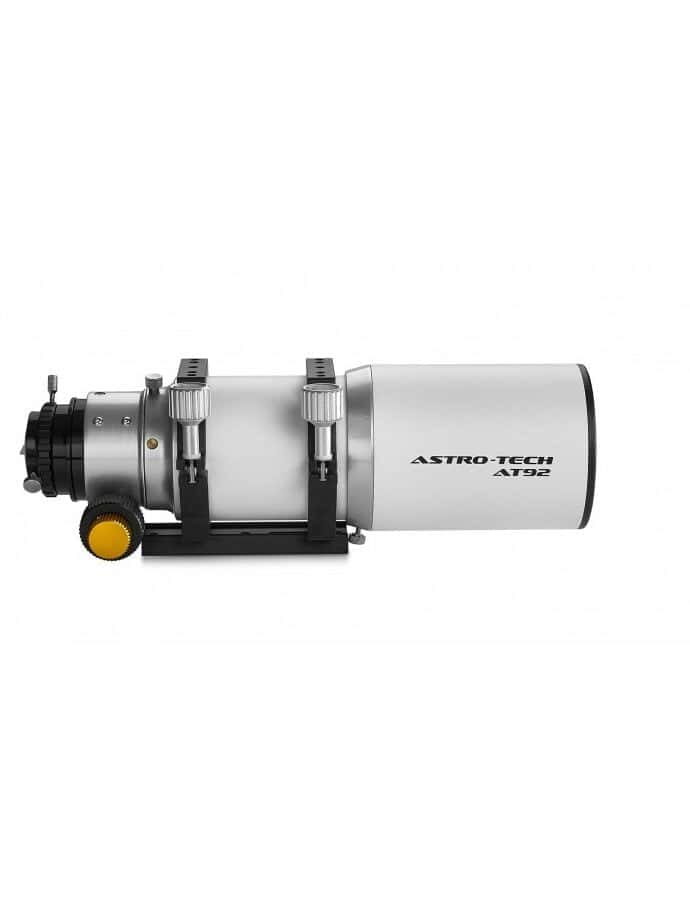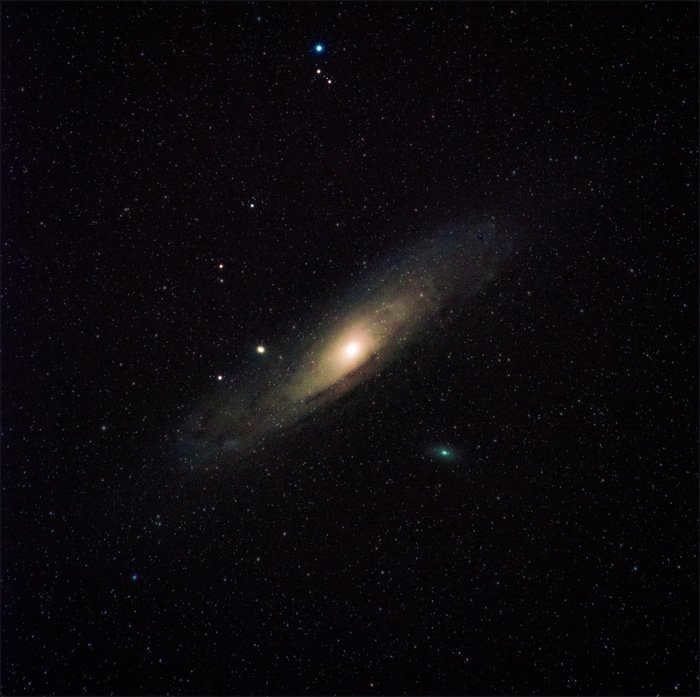An apochromatic refractor is a type of telescope that uses multiple lenses to correct for chromatic aberration, resulting in a high-quality image. This type of telescope is known for its excellent color correction and crisp image quality. The apochromatic refractor is a popular choice among amateur astronomers and astrophotographers due to its superior performance. Its design allows for crisp and detailed views of celestial objects, making it ideal for observing planets, stars, and deep-sky objects. Additionally, the apochromatic refractor is often used for astrophotography because of its ability to capture clear and sharp images. Overall, the apochromatic refractor is a versatile and powerful telescope that offers outstanding optical performance.

The Levenhuk Skyline Travel Sun 70 telescope is a refractor that is lightweight, easy to use, and has great optical capabilities. It works best in areas without light pollution and is ideal for…

The Levenhuk Skyline BASE 70T telescope is an ideal choice for beginners looking to explore the wonders of the universe. This refractor telescope is not only user-friendly, but also provides a crisp and detailed view of the Moon’s surface and terrestrial objects. Learn more about this telescope.

The Levenhuk Blitz 70 PLUS telescope is an excellent refractor-achromat that comes with a comprehensive package. With this telescope, you can explore the Moon, the planets in our solar system, their satellites, and even observe bright objects in deep space. This telescope is capable of providing clear and detailed views of celestial objects, allowing you to further your understanding of the universe. Whether you’re a beginner or an experienced astronomer, the Levenhuk Blitz 70 PLUS telescope is a great choice.

The Levenhuk Skyline PLUS 60T is a traditional refractor telescope mounted on an equatorial mount. It is an excellent choice for observing objects in the near space and provides clear views of the planets in the Earth’s group and lunar craters… more

The Levenhuk Blitz 80s PLUS telescope is a compact optical device designed for observing celestial and terrestrial objects. It features an achromatic refractor design with a shortened focal length… more

The Discovery Spark 709 EQ Telescope with Book is an ideal choice for aspiring astronomers. Equipped with a refractor-achromat, this telescope offers a 70 mm aperture and a focal length of 900 mm, allowing for clear and detailed observations.
With the Discovery Spark 709 EQ Telescope with Book, you can easily explore the Moon’s relief, study various planets, and discover distant celestial objects. Whether you’re a beginner or a seasoned astronomer, this telescope is sure to enhance your stargazing experience.
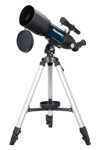
The Discovery Sky Trip ST80 is a small refractor telescope designed for those who are just starting to explore the wonders of the cosmos. It is ideal for taking on trips outside the city, where you can enjoy observing the stars without any interference from city lights. In addition to its compact size, it also comes with a helpful book to further enhance your stargazing experience.

The Levenhuk Blitz 80 PLUS telescope is an achromatic refractor designed for beginners with a strong sense of ambition. While it is user-friendly, it also provides a wide range of capabilities and opportunities. Whether you want to observe celestial objects or conduct detailed astronomical research, this telescope will not disappoint. With its impressive optical performance and durable construction, the Levenhuk Blitz 80 PLUS is a reliable and versatile tool for anyone fascinated by the wonders of the universe.

The Levenhuk Skyline PLUS 70T telescope is a refractor mounted on an equatorial mount designed for observing the planets of the solar system and terrestrial objects. Its impressive range of accessories will satisfy even the most discerning astronomers. With its high-quality optics and user-friendly design, this telescope is perfect for both beginner and advanced stargazers. Explore the wonders of the universe with the Levenhuk Skyline PLUS 70T telescope!

Discover the wonders of the night sky with the Discovery Spark 809 EQ telescope. This refractor-achromat telescope features a generous aperture of 80 mm and a focal length of 900 mm, allowing you to observe celestial objects with clarity and detail.
The Discovery Spark 809 EQ is equipped with achromatic optics, which means it can produce high-quality images without any color distortion. This makes it perfect for studying the lunar landscape and exploring the beauty of the stars.
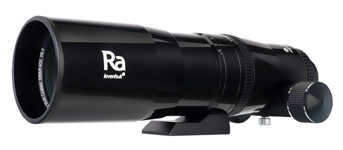
The Levenhuk Ra R66 ED Doublet Black OTA is a refractor-apochromat with a double-lens design and low dispersion optics. It has an aperture of 66 mm and a focal length of 400 mm.
This optical tube is specifically designed for astrophotography and is capable of producing clear and high-contrast images. It allows you to capture bright and unforgettable moments in your photographs.
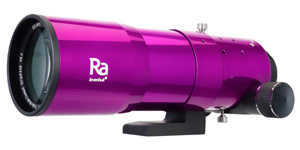
The Levenhuk Ra R72 ED Doublet OTA is a refractor-apochromat with two lenses and low dispersion optics. It has an aperture of 72 mm and a focal length of 432 mm.
This telescope is equipped with full multi-coated luminescence on its low dispersion glass optics, which ensures a high-quality image with excellent clarity and sharpness. Learn more about this product.
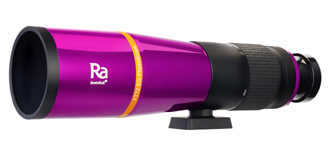
Discover the amazing Levenhuk Ra FT72 ED Phototelescope. This outstanding refractor-apochromat features a unique two-lens design that incorporates low dispersion optics. With a generous aperture of 72 mm and a focal length of 432 mm, this phototelescope is perfect for capturing stunning astrophotography images.
Designed specifically for astrophotographers, the Levenhuk Ra FT72 ED phototelescope is equipped with a high-quality 72-millimeter two-element lens made of ED glass. This lens boasts ultra-low dispersion chromaticity, ensuring crisp, clear images with minimal aberrations. Capture the beauty of the night sky like never before with the Levenhuk Ra FT72 ED phototelescope.
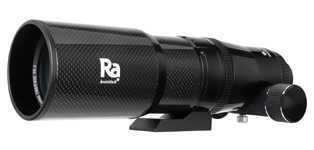
The Levenhuk Ra R66 ED Doublet Carbon OTA is a refractor telescope with a double-lens design and low dispersion optics. It features a 66mm aperture and a 400mm focal length.
This telescope is specifically designed for astrophotography and visual observations of space. It offers high contrast, bright, and visually appealing images. It is perfect for capturing stunning views of celestial objects.
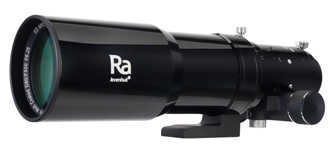
The Levenhuk Ra R80 ED Doublet OTA is a refractor-apochromat with a double-lens design and low dispersion optics. It has an aperture of 80 mm and a focal length of 500 mm.
The Levenhuk Ra R80 ED Doublet OTA is a mobile optical tube that offers excellent optical and mechanical balance. It effectively compensates for chromatic aberrations due to its two-lens design.
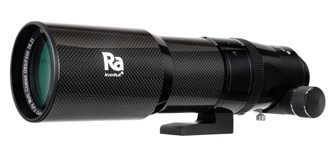
The Levenhuk Ra R80 ED Doublet Carbon OTA is a refractor-apochromat with dual lenses and low dispersion optics. It has an aperture of 80 mm and a focal length of 500 mm.
The Levenhuk Ra R80 ED Doublet Carbon OTA is constructed using the apochromatic refractor design. The optical elements are made of low dispersion glass and are enhanced by a complete multilayer coating.
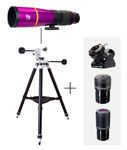
Phototelescope Levenhuk Ra FT72 ED Kit v2 is a two-lens refractor-apochromat with low dispersion optics. It has an aperture of 72 mm and a focal length of 432 mm. The telescope is mounted on an azimuthal mount with a tripod.
The Levenhuk Ra FT72 ED telescope is a versatile tool that is perfect for astrophotography enthusiasts. In addition to functioning as a regular telescope, its optical tube can also be used as a digital camera lens.
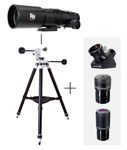
The Levenhuk Ra R66 ED Doublet Carbon Kit v2 is a double-lens refractor-apochromat featuring low dispersion optics. It has an aperture of 66 mm and a focal length of 400 mm. The instrument is mounted on an azimuthal mount with a tripod.
Designed for both near and far astrophotographic field trips and visual observations, the Levenhuk Ra R66 ED Doublet Carbon Kit v2 is lightweight due to its carbon body. Its optics ensure high-quality performance and accuracy in capturing celestial images.
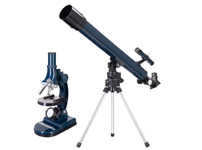
Discovery Scope 2 kit with book Get your hands on a set of two optical devices: a telescope and a microscope. This incredible package includes over 25 accessories and an educational book on the wonders of space
The Discovery Scope 2 kit features a telescope and a microscope, along with a wide range of accessories for exploring the world around you. Additionally, it comes with a captivating book that delves into the mysteries of the cosmos. With this comprehensive kit, you’ll never run out of things to discover.
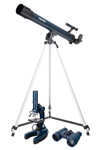
Discovery Scope 3 kit with book Comprising of a trio of optical instruments – a telescope, a microscope, and a pair of binoculars – the Discovery Scope 3 kit is perfect for beginners. The set comes complete with over 30 accessories and a comprehensive book on space exploration.
The Discovery Scope 3 kit includes three entry-level scopes: a bottom-illuminated biological microscope, a full-size tripod telescope, and compact binoculars. Additionally, the kit also includes various other components.
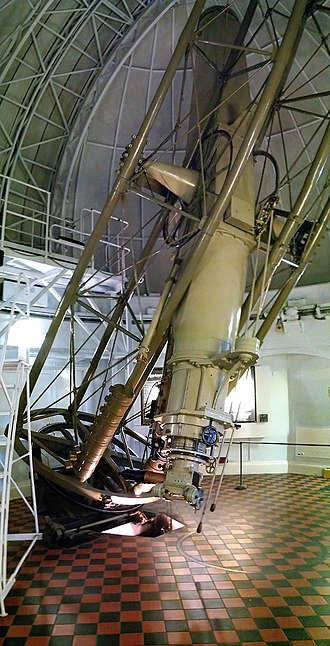
The Levenhuk LabZZ MTB3 set consists of three optical instruments specifically designed for children. Now, exploring the world around you will be even more fascinating! With the microscope, you can uncover the mysteries of the microcosm,…
About Us
Partnership
Shipping & Payment
Levenhuk® is a registered trademark. All rights reserved. © 2002-2023 Levenhuk, Inc. © 2023 Discovery, and related logos and trademarks are trademarks of Discovery and its subsidiaries and affiliates. Used under license. All rights reserved. Discovery.com.
This website is for informational purposes only and is not a public offer as defined by the provisions of Article 437 (2) of the Civil Code of the Russian Federation.
Authorized Dealer
Take Action!
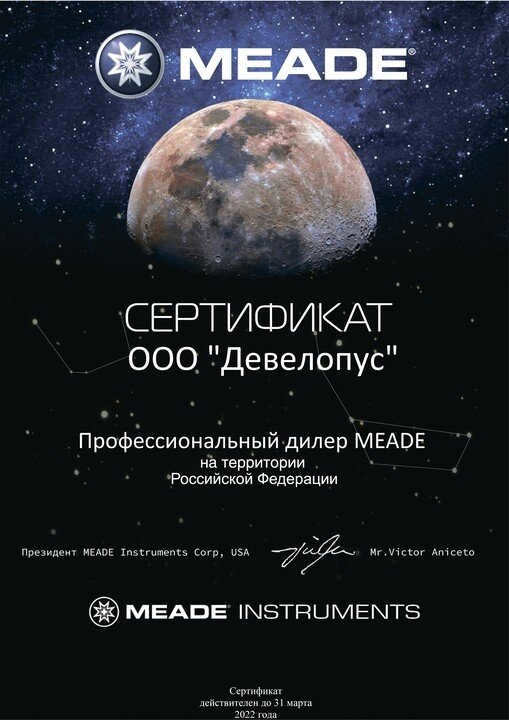
Payment using the “Pay by installments” service
Approval for the credit will take just a few minutes after payment.
Typically, only your passport data is required.
You will be able to see the total amount and payment schedule before taking out the loan.
You can always view the monthly payment schedule and conditions in your Yandex wallet.
The money will be deducted automatically from your wallet, so you just need to make sure to replenish it on time.
Conditions
The loan will be granted upon payment and requires a brief waiting period for approval.
You have the option to repay the loan within 6 or 12 months, with a grace period of 30 days (during which you can repay the loan without incurring any additional fees).
To make payments on the loan, you will need to top up your Yandex wallet (if you don’t have one, it will be created during the payment process). The loan repayment will be automatically deducted from your wallet on a monthly basis, so please ensure that you have sufficient funds available.
The Refractor 80 ED Triplet APO from the 6000 ED range is truly a masterpiece, boasting exceptional optical characteristics and serving as a quintessential premium apochromat featuring a triplet lens constructed with ultra-low dispersion glass. If you desire a flawlessly clear image with accurate color reproduction and a wide field of view, the MEADE apochromat refractor is undoubtedly the ideal choice.
Spectacular and flawlessly sharp visuals
This apochromat will captivate you with its unparalleled precision and superior image quality. The compact and lightweight (only 3.5 kg) 80 ED Triplet APO is capable of impressing even the most seasoned astronomers, as it effectively eliminates chromatic aberration in this optical tube. The images of stars across the entire field of view are so crisp and vivid that they resemble illustrations from the pages of a textbook.
The 80 ED Triplet APO telescope is equipped with a relative aperture of f/6 (80 mm aperture at 480 mm focal length). This feature makes it an excellent choice for capturing stunning astronomical photographs. With a maximum resolving power of 1.45 arc seconds (according to Daves limit), this telescope ensures incredible clarity and detail in your images. Additionally, for optimal visual observations and precise focusing, the telescope is equipped with a sturdy aluminum two-speed rack-and-pinion focuser (2.5″ diameter, speed ratio of 1:10).
The 80 ED Triplet APO apochromat 80 ED lens is made up of three lenses constructed from high-quality glass grade FPL53 with Extra-Low Dispersion. (Extra-Low Dispersion, ED). Each lens surface is coated with a high-performance multilayer enlightening coating. This coating ensures that red, green, and blue rays converge at a single point, resulting in a vibrant, high-contrast, and razor-sharp image with true-to-life colors.
The 80 ED Triplet APO refractor-apochromat can also be an excellent complement to a larger telescope of the Newton, Schmidt-Cassergren, or ACF system. When mounted vertically, the 80 ED Triplet APO performs exceptionally well as a guide or wide-field astrograph. In the latter scenario, guiding is done through the larger telescope below.
The 80 ED Triplet APO telescope is equipped with a retractable hood, which serves the purpose of safeguarding the lens against dew and stray light. Additionally, it comes with a durable case for convenient transportation and a Vixen standard mount featuring clamping rings. The utilization of this widely-used standard mount enables effortless and swift mounting of the 80 ED Triplet APO on an equatorial mount.
Supply kit
- Telescope 80mm ED TRIPLET APO (f/6) (provided with a dovetail mount, excluding finder and diagonal mirror)
- Sturdy case for telescope
- User manual in Russian and MEADE warranty card.
| Features | |
| Lens diameter, mm | 80 |
| Focal length, mm | 480 |
| Telescope type | Refractor |
| Optical scheme | Apochromat |
| Type of mount | No mount |
| Relative aperture | f/6 |
| Coating | multilayer |
| finder | not included |
| Field corrector | 2″ triple element 0.8X |
| Mounting | “dovetail mount (VIXEN standard) |
| Maximum useful magnification, multiples | 170 |
| Minimum useful magnification, multiples | 13 |
| Lens (materials) | FK61 glass with ultra-low dispersion index |
| Main focuser | Precision 2.5-inch 2-speed 10:1 rack-and-pinion focuser with zero offset |
| 90° optical axis deflection | 2″ dielectric coated diagonal mirror (sold separately) |
| Penetration (stellar magnitude, approx.) | 11.3 |
| Resolution, ang. sec | 1.44 |
| Country | USA, Mexico |
| User level | For amateurs, For experienced |
| Focusing | By moving the eyepiece |
| Eyepiece seating diameter | 1.25″ (31.7mm) or 2″ (50.8mm) |
| Warranty | 5 years |
| Item no. | TP261001 |
| Dimensions, mm | 495 x 229 x 286 |
| Weight, g | 3100 |
| Total weight, kg | 3.1 |
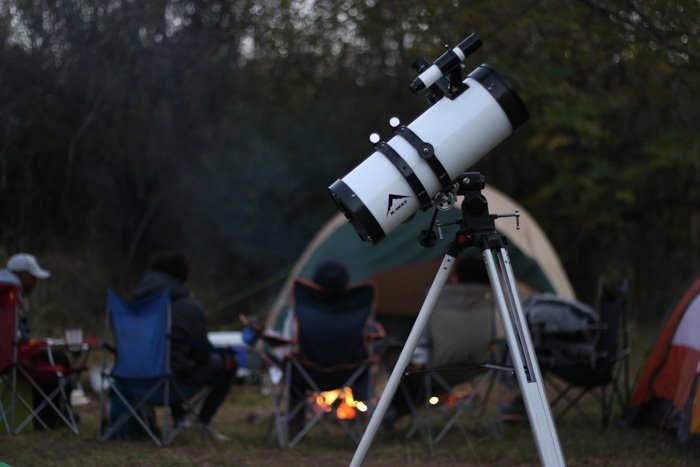
It can be quite challenging to select the ideal telescope for astrophotography. Telescopes are both sizable and costly, occupying a significant amount of space. Hence, when seeking the best telescope for astrophotography, it is advisable to avoid rushing and instead acquaint oneself with the various options available. We have endeavored to present a telescope suitable for astrophotography enthusiasts of all levels. The realm of capturing the night sky and our solar system is more accessible than most people perceive. There are even telescopes specifically designed for observing planets!
Top 10 Telescopes for Astrophotography
Discover the finest telescopes for astrophotography. We have compiled a list that includes both affordable options for beginners and advanced models for seasoned enthusiasts. If you are unsure about what to consider, make sure to check out our comprehensive buying guide at the conclusion. Alternatively, Celestron telescopes offer an excellent starting point!
10. Gskyer 70mm telescope (budget/child)
- Refractor
- 70 mm aperture
- 400 mm focal length
- f/5.7
- 16x and 40x Kellner eyepieces, 3x Barlow lens
- 524 Seeker with mounting bracket and line crosshairs
- Alt-azimuth mount
- 16x to 120x magnification
- 2.6 Kilograms
Undoubtedly, astrophotography can be quite costly. However, if you have a limited budget but still want to try capturing images of the moon and stars, the Gskyer 70mm telescope is the perfect choice. This telescope is incredibly affordable and readily available online. Can it be used for astrophotography? Absolutely, especially if you are a beginner.
According to our assessment, the Gskyer telescope stands out as an economical option that offers satisfactory image quality. With its 400mm focal length, it is capable of capturing impressive shots of the Moon. Additionally, the telescope is equipped with a convenient phone mount and a remote control, making it ideal for those interested in experimenting with astrophotography using their mobile devices.
Given its affordable price, it is worth noting that the Gskyer may occasionally exhibit chromatic aberration. This can manifest as a slight blurring or distortion of colors around celestial objects such as the moon. However, it is important to emphasize that this drawback can be easily rectified during the post-production process if desired.
The Gskyer kit includes several useful accessories, including a 45-degree diagonal, a smartphone adapter, a wireless camera remote, an adjustable aluminum alloy tripod, and a convenient carrying bag.
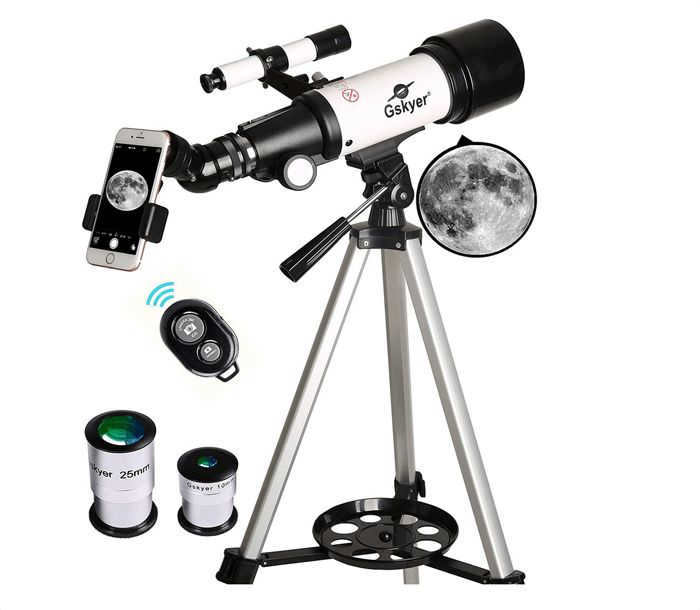
9. Orion StarBlast 4.5 Astro Reflector Telescope Kit
- Reflector
- 114 mm aperture
- 450 mm focal length
- f/4
- 6mm and 17mm Kellner eyepieces
- Accumulator with red dots
- Alt-azimuth mount
- 16x to 228x magnification
- 5.8 Kilograms
Looking for a more powerful telescope option than the Gskyer? Consider investing in the Orion StarBlast 4.5. It has superior features and comes pre-assembled, allowing you to start using it right out of the box. While it may cost about three times as much as the Gskyer, its performance and convenience make it worth the investment.
The Gskyer telescope has a focal length that is shorter by 50mm compared to the StartBlast. It has an aperture of f/4 which allows for a significant amount of light to enter. This feature enables faster photo capture compared to other telescopes. Additionally, the StartBlast includes an optional moon filter, eliminating the need for purchasing an additional filter for your camera.
Unlike the Orion Starblast, the Gskyer does not come with a tripod. Instead, it is equipped with a tabletop base, making it convenient for beginners as it can be easily set up on a table. However, if you plan on taking photos outside of your home, using the telescope may be challenging due to its lack of a tripod.
The Gskyer telescope comes with various accessories including two eyepieces, a collimation cap, a reflex sight, and an eyepiece tripod.
- Perfect for kids and first-time buyers
- Offers a wide field of view
- Lightweight design
- Convenient table stand
- User-friendly
- Lower focal length
- Not ideal for capturing highly detailed images of planets
- Inferior quality eyepiece
- Affordable price
- Comes with a wide variety of accessories
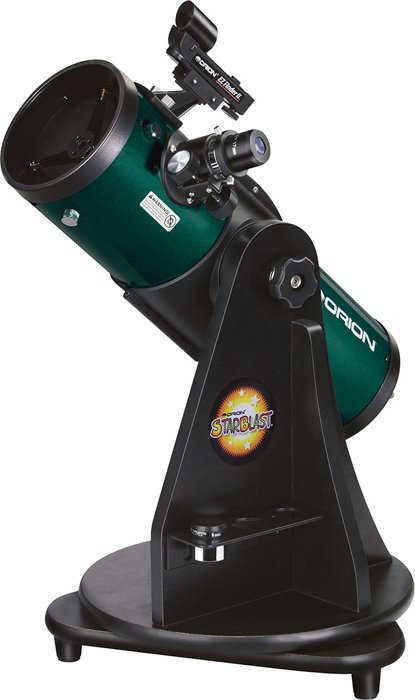
8. Sky-Watcher Evoguide 50ED APO refractor
- Apochromatic refractor
- 50 mm aperture
- 242 mm focal length
- f/4.8
- No eyepieces
- No finder
- No mount
- Magnification up to 100x
- 0.8 Kilogram
- No accessories
It’s always a pleasant experience to save some money on equipment. However, is it worth it if you end up with a cheap telescope that has distracting chromatic aberration?
If you’re looking for a simple telescope without breaking the bank, the Sky-Watcher Evoguide is worth considering. While it may not come with as many extras as other models, it offers fantastic quality at a reasonable price.
While it may not have the same outward appeal as its competitors, the Evoguide proves its worth when it comes to performance. In our opinion, it stands among the best in its class.
The Evoguide is a refractor with triple APO lenses. As outlined in the buying guide below, this means it has the necessary optics to effectively correct any chromatic aberrations that may occur. Its straightforward design also makes it beginner-friendly. Resembling a standard telescope, it can be used immediately after attaching the camera.
- Perfect for observing stars, the moon, and planets
- Provides vivid views of deep sky objects
- Well-suited for astrophotography
- Made with ultra-low dispersion (ED) glass
- Appropriate for all skill levels

7. Orion ED80T CF Triplet Apochromatic Refractor
- Apochromatic Refractor
- 80 mm aperture
- 480 mm focal length
- f/6
- No eyepieces
- No finder
- No mount
- 12x to 160x magnification
- 2.5 Kilograms
The Orion ED80T is a cost-effective choice for amateur astrophotographers. It is compact and lightweight, making it suitable for both practical and photographic use.
This telescope is highly regarded for its exceptional imaging capabilities. Additionally, it features built-in dew protection, ensuring optimal performance during night photography.
The bundle also includes a 2-inch Crayford focuser with a two-speed (11:1) feature, an adapter to downsize from 2 to 1.25 inches, a dovetail scope base, a mounting block measuring 0.25-20 inches that replicates the Vixen-style dovetail bar, a convenient carrying bag, and the Starry Night software for astronomical photography.
Moreover, the telescope is equipped with ultra-low dispersion (ED) glass to combat chromatic aberrations. Opt for the Orion ED80T as your initial telescope and you won’t be disappointed.
- ED glass
- Impressive resolution
- Perfect for astrophotography
- Compact and lightweight
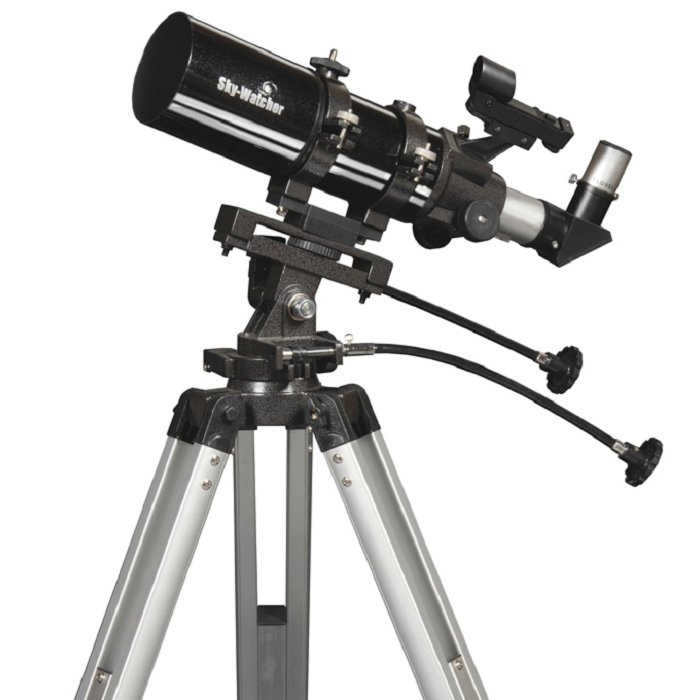
6. Celestron AstroMaster 130EQ Newtonian Telescope
- Newtonian reflector
- 114 mm aperture
- 1000 mm focal length
- f/5
- Two eyepieces
- Red dot finder
- Manual equatorial mount
- 16x to 269x magnification
- 7.7 Kilograms
If you’re interested in astrophotography but don’t have the budget for an expensive telescope, then the Celestron AstroMaster 130EQ Newtonian Telescope is a great option for you. It offers many of the same features as higher-end telescopes at a more affordable price.
The Celestron AstroMaster is a great telescope for capturing stunning images of planets and constellations, thanks to its 114mm aperture. Additionally, it comes with an equatorial mount that has two slow-motion control knobs, allowing for precise adjustments.
However, it’s important to note that the Celestron AstroMaster is not recommended for beginners. It can be challenging to set up and use, even without a camera. In other words, some prior knowledge and experience with telescopes is necessary to fully utilize its capabilities.
Nevertheless, this shouldn’t discourage you from purchasing the Celestron AstroMaster, even if you’re a beginner. Investing in high-quality astrophotography equipment early on can be a wise decision. The telescope kit includes a tripod and Starry Night astronomical photography software, which are valuable additions.
- Perfect for observing the wonders of the deep sky
- Compact and lightweight
- User-friendly
- Comes with a tripod and Starry Night software
- Instructions may be missing or unclear
- Insufficient accessories
- Problems with quality control
- A more suitable option would have been an alt-azimuth mount
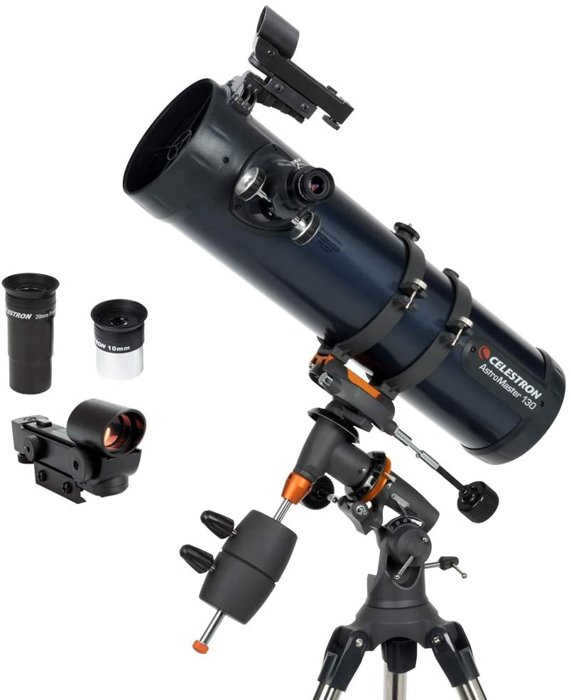
5. Celestron NexStar 127SLT
- Refractor or catadioptric Maksutova-Cassegrain
- 127 mm aperture
- 1500 mm focal length
- f/12
- Two eyepieces
- Red-dot finder
- GoTo computerized alt-azimuth mount
- 18x to 300x magnification
- 8 Kilograms
Are you a beginner but don’t want to spend a fortune? Then you should take a look at the Celestron NexStar 127SLT. This telescope is quite advanced and available for purchase!
What sets apart the NexStar 127SLT from the NexStar 127SLT? This specific model is equipped with a built-in computer, making it a star location telescope (SLT). With this feature, you no longer need to rely on guesswork when it comes to locating planets or constellations in the night sky. Simply input the celestial object you wish to track, and the device will automatically find it for you. This is particularly advantageous for those who are new to astrophotography.
The NexStar is available in two telescope versions – refractor and catadioptric. Its 127mm aperture is perfect for capturing images of the deep sky. You can use it to photograph constellations and even observe the magnificent rings of Saturn!
Additionally, it comes with a star diagonal, SkyAlign, and Starry Night astronomical photography software to enhance your stargazing experience.
- Durability
- Ready for mounting with a database of 40,000 objects
- Perfect for observing planets
- A lightweight and portable telescope
- SkyAlign assists in aligning telescopes with popular celestial objects
- Battery charging feature makes it convenient for travelers
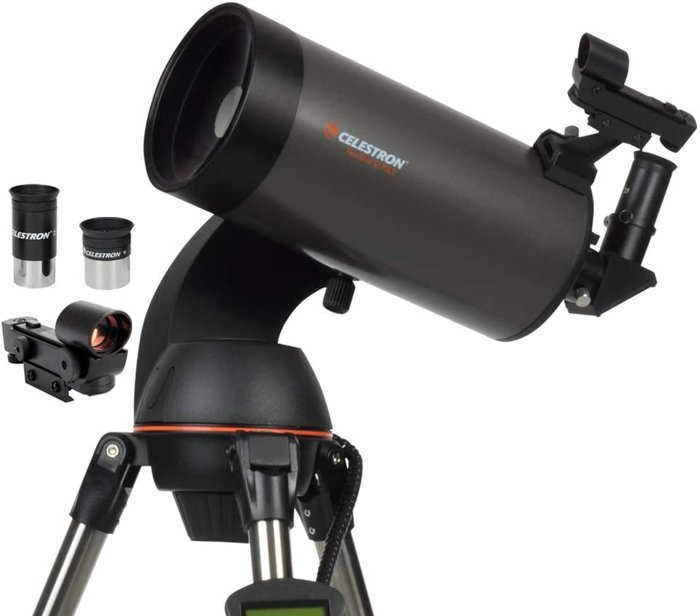
4. TS-Optics PHOTOLINE 80mm f/6 FPL53 Triplet APO
- Apochromatic refractor
- 80mm aperture
- 480mm focal length
- f/6
- 2-inch Crayford eyepiece (threaded connector, micro 1:11 mount)
- No finder
- No mount
- Magnification up to 260x
- 2.7 Kilograms
The Photoline 80mm telescope is perhaps one of the most impressive telescopes available in its price range. However, what sets it apart from other options is its specific focus on astrophotography, hence the name Photoline.
Without a doubt, we cannot overlook the superior quality of the photographs produced by the Photoline 80mm. The inclusion of a triplet APO ensures that there are no undesirable chromatic aberrations, making it a top choice. Additionally, this telescope is just as sharp as its more expensive counterparts. Therefore, if you desire exceptional performance at an affordable price, this is the optimal selection for you.
The package comes complete with a CNC aluminum tube featuring rings and a dovetail bar, a 2.5-inch RAP focuser equipped with a two-speed transmission, a 1.25-inch gearbox, a mounted finder shoe, and an aluminum case.
We understand that the Photoline 80mm may still be considered somewhat costly. Nevertheless, when you take into account all of its advantages, this telescope is truly a worthwhile investment!
- Excellent color correction
- Superb contrast
- Compact design
- Retractable dew protection
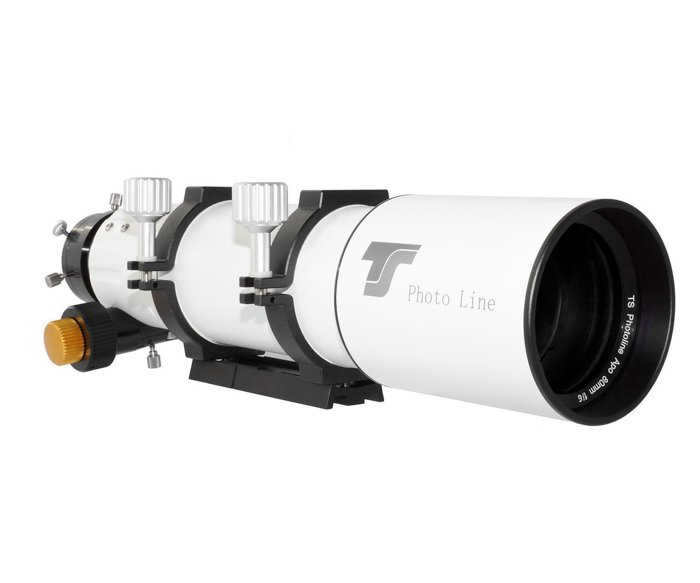
3. Orion 09007 SpaceProbe 130ST Equatorial Reflector Telescope
- Newtonian reflector
- 130 mm aperture
- 650 mm focal length
- f/5
- 10-mm (26x) and 25-mm (65x) Sirius Plossl eyepieces
- 630 Seeker
- Equatorial mount
- 19x to 260x
- 12.2 Kilograms
Orion is a well-known brand in the telescope industry, offering a wide range of products to suit different budgets and needs. The Orion 09007 SpaceProbe 130ST is an excellent option for beginner astrophotographers who are looking for a quality telescope at an affordable price.
The SpaceProbe 130ST stands out for its exceptional use of high-quality materials. Furthermore, it offers a competitive price point, which is particularly noteworthy considering the need for top-notch optics in astrophotography that Orion fulfills!
With a 5.1-inch aperture, the SpaceProbe enables you to observe and capture images of distant planets and even nebulae. Its 24-inch tube makes it portable and perfect for extended journeys. Additionally, the entire set weighs a mere 27 pounds, making it highly convenient for remote locations.
One more notable feature of the SpaceProbe is its equatorial mount, which allows for precise manual tracking of stars. The kit includes a 1.25-inch rack-and-pinion focuser, tripod, tripod accessory tray, tube rings, collimation cap, and the Starry Night astronomical photography software.
- Quick focal length
- Perfect for capturing detailed images of distant celestial objects
- Expansive field of vision
- Convenient and easy to transport telescope
- Inadequate instructions, leading to difficulties with assembly
- Vibration in the lightweight mount
- Requires an additional lens
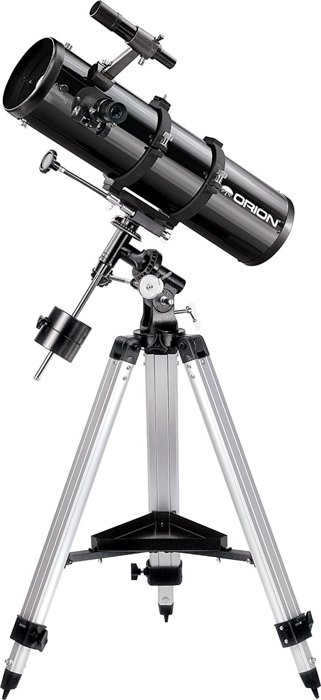
2. Celestron NexStar 8SE
- Schmidt-Cassegrain catadioptric system
- 203.2 mm aperture
- 203.2 mm focal length
- f/10
- 25 mm eyepiece
- Red dot finder
- GoTo table mount
- 29x to 480x magnification
- 15 Kilograms
This particular telescope is one of the most expensive options available in our selection. However, it also happens to be one of the finest choices on the market. Boasting exceptional optics and a computerized GoTo tracking system, the Celestron NexStar 8SE is primarily geared towards advanced astrophotographers who require a longer focal length in order to achieve a narrower field of view.
The Nexstar 8 SE telescope is equipped with a basic red dot finder and a standard 25mm eyepiece. In order to fully maximize the exceptional optics of the telescope, it is recommended to invest in high-quality eyepieces.
The Celestron NexStar 8SE telescope boasts a fully automated built-in GoTo mount that effortlessly locates and tracks celestial objects. Additionally, it features an extensive database of over 40,000 celestial objects!
One potential drawback of the Nexstar 8 SE camera is its focal length of f/10, resulting in limited light intake for your camera. In other words, it may require a slower shutter speed for photography. On the contrary, other options offer a superior f/4 focal length, making them more suitable for astrophotography.
Nevertheless, the Nexstar 8 SE telescope is lightweight, portable, and user-friendly. It includes a star diagonal, database, and SkyAlign software.
- Impressive aperture size
- High definition
- Perfect for observing both celestial bodies and distant galaxies
- Its stability may sometimes impact the quality of the images
- Limited battery longevity
- Requires extended shutter speed
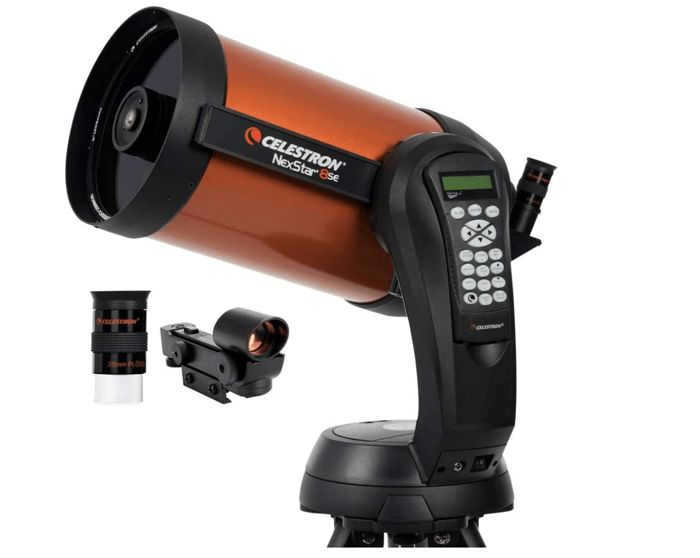
1. Takahashi FSQ-85ED
- Apochromatic refractor
- 85 mm aperture
- 450 mm focal length
- f/5.3
- Without eyepieces
- 630, 8 finder
- Without mount
- 11.6x – 178x
- 3.5 Kilograms.
The Takahashi FSQ-85ED is a refractor telescope that offers exceptional portability and versatility. With its 85mm aperture and 450mm focal length, it provides impressive views of the night sky. Its apochromatic design ensures crisp and clear images, making it ideal for astrophotography. Whether you’re a beginner or an experienced astronomer, this telescope is a great choice. It is lightweight and compact, making it easy to take with you on your stargazing adventures. The FSQ-85ED is also compatible with medium format CCD or DSLR cameras, allowing you to capture stunning images of celestial objects. With its wide range of magnification options and high-quality optics, this telescope is sure to impress any astronomy enthusiast.
The telescope is equipped with a premium ultra-low dispersion (ED) doublet design, which effectively reduces color cast caused by the Earth’s atmosphere. It is specifically designed for intermediate level users, offering more advanced features compared to beginner telescopes.
One standout feature is the built-in camera rotator, allowing for a full 360-degree rotation without compromising focus. Additionally, it includes a 72mm rack-and-pinion focuser, dust caps, retractable dew shield, and a built-in camera angle adjuster.
- Excellent color correction
- Produces varied and detailed images
- Offers high contrast
- Perfect for capturing deep sky and wide field of view shots
- Equipped with a sliding dew shield
- Portable and easy to transport
- Constructed with high-quality materials
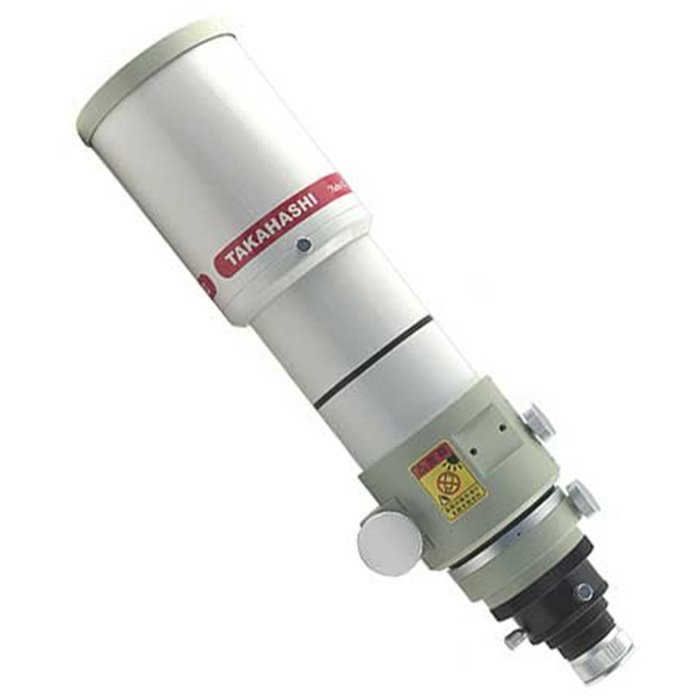
Guide for Purchasing: How to Choose the Right Telescope?
It is often claimed that the finest telescopes for astrophotography are those that are of the highest quality or most expensive. However, not all individuals are able to afford equipment that costs thousands of dollars.
Astrophotography is not solely a hobby for affluent individuals. Regard our aforementioned list as a resource to assist you in determining which telescope is suitable for your budget and current requirements. You may be pleasantly surprised to discover that some of the more reasonably priced options can compete with their pricier counterparts.
You may encounter certain challenges, such as a lack of tracking. Nevertheless, as long as the lens delivers excellent outcomes, that is all that matters.
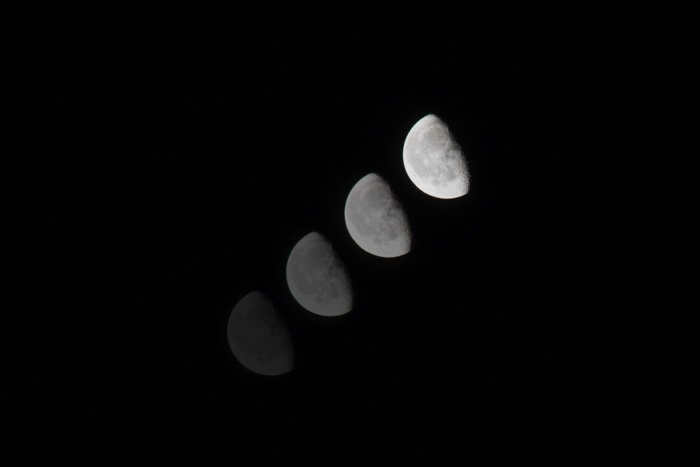

Choosing the Right Telescope for Astrophotography
If you’re new to astrophotography, it’s a good idea to start with one of the more affordable telescopes mentioned in this article. It’s important to learn the basics before investing in a more expensive option. Take your time to save up for a higher-quality telescope, as it will greatly enhance your astrophotography experience. By familiarizing yourself with the techniques and equipment used in this field, you can eventually progress to using more advanced and sophisticated tools.
Another option is to look for used telescopes, as you can often find good deals. However, it’s crucial to obtain detailed information about their condition. You want to avoid purchasing a telescope with faulty components or dirty lenses, as this can significantly impact the quality of your astrophotography.
To start, you must make a decision about the subject you wish to capture through your camera lens. This crucial step will aid in pinpointing your exact requirements. Subsequently, it is important to take into account your financial limitations and select a reasonably priced telescope that is suitable for astrophotography purposes.
Photographic Equipment for Capturing the Celestial Beauty
When it comes to astrophotography, having the right camera is just as crucial as having a telescope. Surprisingly, you can use almost any camera for this purpose, as long as you have the appropriate adapter. You can even utilize your smartphone if you prefer. However, if you value superior optics and image quality, it is recommended to opt for a DSLR or mirrorless camera.
A full-frame DSLR or mirrorless camera will provide you with the highest resolution and image fidelity. Nonetheless, even an entry-level camera with a cropped sensor can produce impressive results. In fact, many avid astrophotography enthusiasts opt for them because the cropped sensor factor allows for a closer view of the celestial subject.
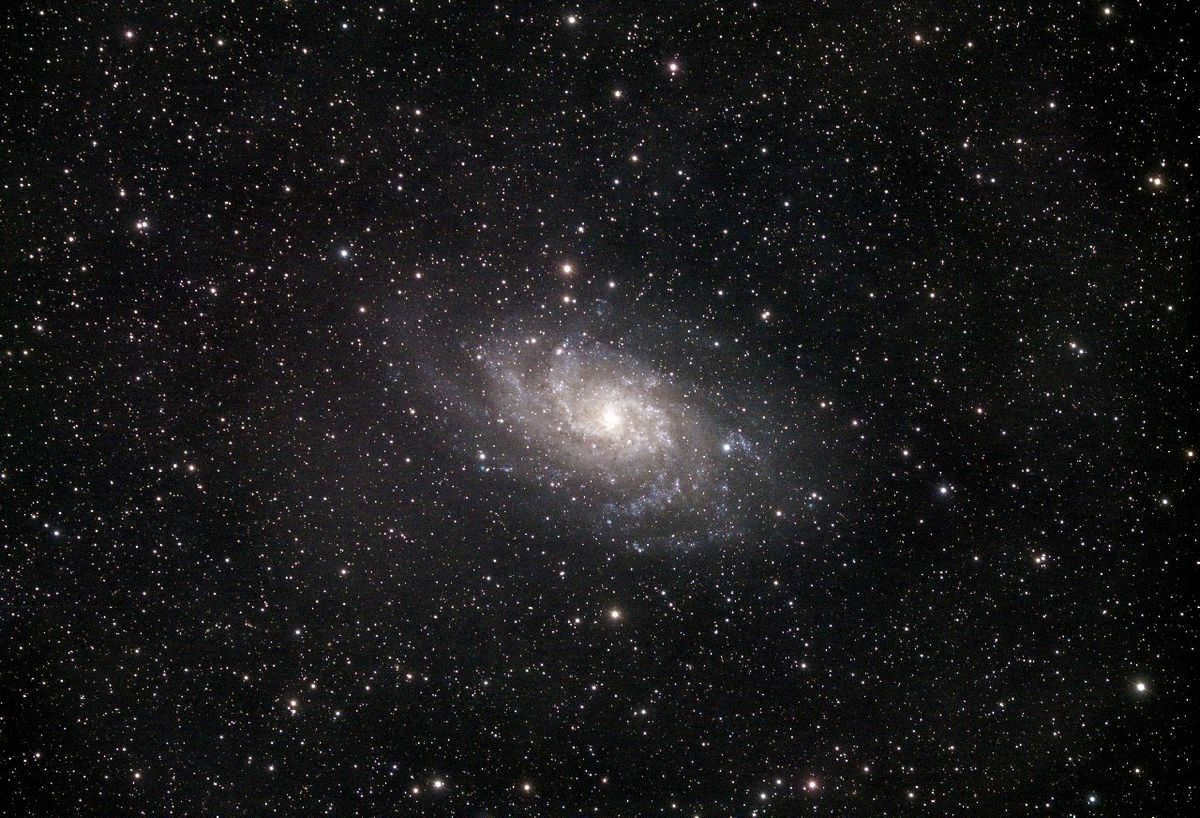
Which telescope is ideal for astrophotography?
When it comes to astrophotography, it is important to consider practicality and usability. By selecting the most suitable model for your specific needs, you can enhance your hobby rather than hinder it.
So, what is the optimal telescope for beginners? There are numerous options available in various shapes and sizes. The two primary types are refractor telescopes and reflectors. Let’s explore each style and determine which one suits you best.
Apochromatic refractors
The Apochromatic Refracting Telescope employs a lens made of ultra-low dispersion (ED) glass to generate clear images devoid of chromatic aberration. This APO telescope is widely regarded as the ultimate choice for astrophotography and planetary observations.
Furthermore, these telescopes are compact, lightweight, and easily portable. They possess outstanding color correction capabilities, rapidly adapt to temperature changes, and offer effortless focusing. If you are a novice astrophotographer, we highly recommend investing in a refractor telescope.
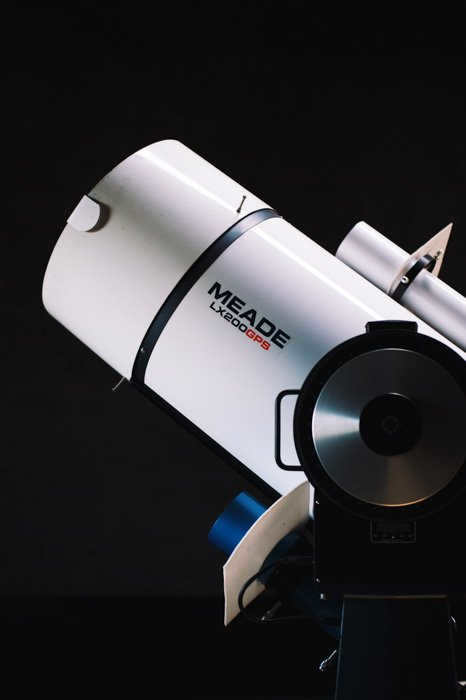
Types of Telescopes
A refracting telescope, also known as a refractor, is a type of telescope that uses a combination of lenses to gather and focus light. These lenses bend, or refract, the light to create an image.
Refracting telescopes have their advantages and disadvantages. While they can produce high-quality images with no optical aberrations, they are limited in their ability to gather light. This makes them well-suited for planetary photography, but not ideal for deep-sky astrophotography.
Another type of telescope is the reflecting telescope, also known as a reflector. Reflecting telescopes use curved mirrors to gather and focus light. They can suffer from other types of optical aberrations, but their design allows for the use of large diameter mirrors, making them ideal for deep-sky astrophotography.
A popular type of reflecting telescope is the catadioptric telescope, which combines the use of mirrors and lenses to improve error correction. There are two main types of catadioptric telescopes: the Schmidt-Cassegrain and the Maksutov-Cassegrain.
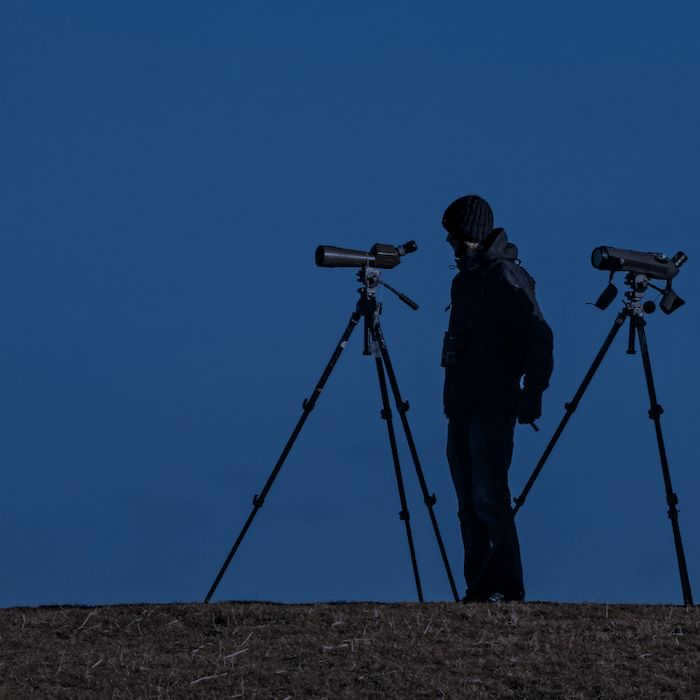
Essential Accessories
Aside from your camera and telescope (or optical tube), there are a few other items that you will need:
- A diagonal – This is an angled mirror or prism that allows you to view celestial objects with the correct side facing upward
- Finderscope – This is a device that helps you aim the telescope, similar to a scope on a rifle
- Pipe rings and dovetail bar – These are adjustable rings for the finderscope and a dovetail bar for attaching additional equipment
- Field Sealer/Reducer – This accessory helps prevent spherical distortion
- Carrying case – A carrying case is essential to protect your telescope during travel and storage
Most of the telescopes mentioned in this article already come with the necessary accessories. However, if you want to ensure optimal performance, you may still need to purchase a field flattener as it is not typically included as standard.
Summary
Astrophotography can be a pricey hobby. Nevertheless, we encourage you to explore this incredible activity. It offers valuable opportunities for both scientific and creative growth. We trust that this article will assist you in finding the perfect telescope for your astrophotography endeavors!
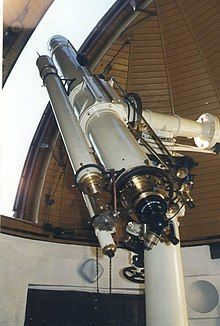
A refractor telescope, also known as a refracting telescope, is an optical telescope that uses a lens as its objective to create an image. This type of telescope, also called a dioptric telescope, was originally used in spyglasses and astronomical telescopes, but it has also been utilized in long-focus camera lenses. While large refracting telescopes were popular in the late 19th century, they have largely been replaced by reflecting telescopes for research purposes due to their ability to accommodate larger apertures. The magnification of a refractor is determined by dividing the focal length of the objective lens by the focal length of the eyepiece.
A refractive telescope, which is commonly used in various optical devices like binoculars and zoom lenses, is a technology that has been in existence since the early days of telescopes.
Origin
The origins of refractive telescopes can be traced back to the Netherlands in 1608, when a eyeglass manufacturer named Hans Lippershey attempted to patent the invention. However, he was unsuccessful in securing the patent. The news of this new technology quickly spread, and Galileo Galilei, who was in Venice at the time, became aware of the invention. Inspired by Lippershey’s idea, Galileo constructed his own version of the refractive telescope and used it to make groundbreaking astronomical discoveries.
Designs of Refracting Telescopes
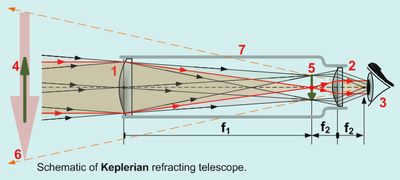
All refracting telescopes work on the same principles. They utilize a combination of an objective lens and an eyepiece to gather more light than the human eye can on its own, to focus it, and to present a magnified and clearer virtual image to the viewer.
The lens in a refracting telescope is responsible for refracting or bending light. This refraction causes the parallel rays of light to converge at the focal point, while the non-parallel rays converge at the focal plane. The telescope transforms a beam of parallel rays, with an angle α relative to the optical axis, into a second parallel beam with an angle β. The ratio of β to α is known as the angular magnification. It is equal to the ratio of the size of the retinal image obtained with and without the telescope.
There are various designs of refractive telescopes that can be used to correct for image orientation and different types of aberrations. These telescopes, also known as refracting telescopes or refractors, form images by bending or refracting light.
Galileo’s telescope
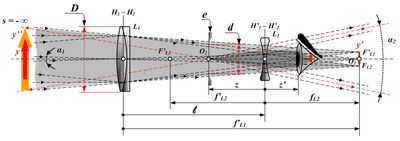
Optical diagram of Galileo’s telescope: y- Distant object; y’ – Real image from objective lens; y” – Magnified virtual image from eyepiece; D – Diameter of entrance pupil; d – Diameter of virtual exit pupil; L1 – Lens of objective lens; L2 – Lens of eyepiece e – Virtual exit pupil – Telescope equal to
The Galileo telescope is commonly referred to as the design used by Galileo Galilei in 1609. He utilized a gathering (flat-convex) objective lens and a diverging (flat-curved) eyepiece lens (Galileo, 1610). This design does not have an intermediate focus, resulting in a non-inverted and, with the aid of certain devices, direct image.
Galileo’s telescope, which had a length of 980 millimeters (3 feet 3 inches), had a magnification power of approximately 30 times. However, due to certain design flaws, such as the lens shape and limited field of view, the resulting images were often blurry and distorted. Despite these limitations, Galileo was able to utilize the telescope effectively in his exploration of the night sky. He observed various features such as craters on the Moon, the four largest moons of Jupiter, and the phases of Venus.
When light rays from a distant object (y) pass through the objective lens, they can be focused at the focal plane (FL1/y’). The eyepiece (L2), which is diverging, intercepts these rays and makes them parallel once again. However, the non-parallel rays of light from the object, which originally came at an angle α1 to the optical axis, now travel at a larger angle (α2>α1) after passing through the eyepiece. This leads to an increase in the apparent angular size and is what causes the perceived magnification.
The finite image (y”) is a virtual image that is located at infinity and appears just like the object itself, but upside down.
The Kepler telescope
The Kepler telescope is an astronomical observatory launched by NASA to discover Earth-sized planets orbiting other stars. Its main goal is to determine the frequency of Earth-sized planets in the habitable zone of Sun-like stars. The Kepler telescope uses the transit method to detect exoplanets, which involves measuring the slight dimming of a star’s brightness when a planet passes in front of it. This data is then used to determine the size, orbit, and potential habitability of the exoplanet. The Kepler telescope has been highly successful in its mission, discovering thousands of exoplanets and revolutionizing our understanding of the vastness and diversity of the universe.
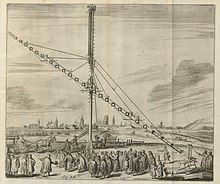
An image of the Kepler Astronomical Refractor Telescope, constructed by Johannes Hevelius, is engraved. This telescope has a remarkable focal length of 46 m (150 ft).
The Kepler telescope, which was invented by Johannes Kepler in 1611, represents an advancement in design compared to Galileo’s telescope. Unlike Galileo’s concave lens, the Kepler telescope utilizes a convex lens as the eyepiece. This modification offers several advantages, including converging rays of light emitted from the eyepiece, resulting in a wider field of view and a greater exit pupil distance. However, it should be noted that the image seen through the Kepler telescope is inverted. Furthermore, this design allows for higher magnification, but in order to counteract aberrations, a simple lens must possess a significantly high f-ratio. For instance, Johannes Hevelius constructed a lens with a 46-meter (150-foot) focal length, and even longer chamberless “air telescopes” have been constructed. Moreover, this design permits the utilization of a micrometer in the focal plane, enabling the determination of the angular size and/or distance between observed objects.
Huygens constructed an airborne telescope for the Royal Society of London that featured a single-element lens measuring 19 cm (7.5″).
Achromatic refractors
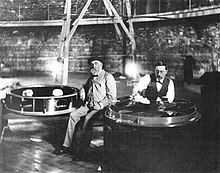 In 1896, Alvan Clarke meticulously polished a large achromatic refractor lens for the Yerkes Observatory, which had a diameter of over 1 meter.
In 1896, Alvan Clarke meticulously polished a large achromatic refractor lens for the Yerkes Observatory, which had a diameter of over 1 meter. 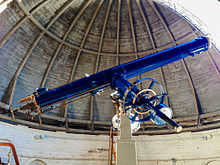 This refractor, measuring 12 inches, is securely mounted within a dome and rotates in sync with the Earth’s rotation.
This refractor, measuring 12 inches, is securely mounted within a dome and rotates in sync with the Earth’s rotation.
The achromatic lens, a lens with multiple elements, was a significant development in the progress of refracting telescopes. It was created in 1733 by Chester Moore Hall, an English lawyer, but was also independently invented and patented by John Dollond in around 1758. This innovation effectively addressed the issue of chromatic aberration and allowed for shorter focal lengths. By utilizing a lens composed of two pieces of glass with different dispersions, known as a “corona” and a “colorless glass,” the design eliminated the need for excessively long focal lengths. Each side of the glass pieces is meticulously ground and polished before they are assembled together. The achromatic lenses are carefully calibrated to focus both red and blue wavelengths in the same plane, effectively reducing both chromatic and spherical aberration.
In 1730, Chester More Hall achieved a significant milestone in lens technology by creating the first dual color-corrected lens.
Dollond’s achromats gained popularity during the 18th century due to their ability to be made shorter. However, limitations in glass production prevented the creation of lenses larger than four inches in diameter.
By the late 19th century, Guinand, a renowned glass manufacturer, developed a groundbreaking technique for producing high-quality glass blanks larger than four inches. He passed on this knowledge to his apprentice Fraunhofer, who further refined the technology and designed the innovative Fraunhofer’s duplex lenses. This advancement in glass manufacturing revolutionized telescope design, allowing for the creation of larger and more powerful refractors throughout the 19th century. By the end of the century, these refractors had reached sizes exceeding 1 meter. Eventually, silvered glass mirror telescopes replaced them in the field of astronomy.
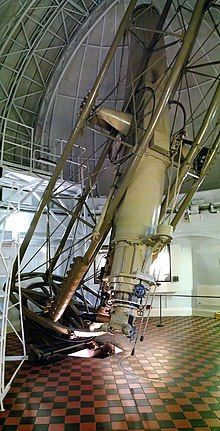
The 28-inch refractor at Greenwich has become a popular tourist destination in London in the 21st century. Visitors can marvel at the impressive telescope, which was crafted by renowned manufacturers such as Elvan Clarke, Brashear, Chance Brothers, Koshua, Fraunhofer, Gauthier, Grubb, Henry Brothers, Lerebourg, and Tully. This historic instrument offers a unique glimpse into the world of astronomy and the advancements made by these skilled craftsmen.
At the Greenwich Royal Observatory, there is a telescope known as the Shipshanks telescope that was built in 1838 and features a Cauchois lens. This telescope, created by Sheepshanks, had a lens that measured 6.7 inches (17 cm) in width, making it the largest telescope at Greenwich for a period of approximately twenty years.
The 1840 report from the Observatory described the Sheepshanks telescope with a Cauchoix doublet as follows:
“This telescope possesses both great power and exceptional quality, making it an extremely valuable addition to the Observatory’s collection of instruments.”
In the early 1900s, Zeiss emerged as a prominent manufacturer of optics. One notable example of their accomplishments with refractors is the Zeiss 12-inch refractor at the Griffith Observatory, which has been enjoyed by over 7 million visitors since its opening in 1935. This impressive number represents the largest amount of people to have ever looked through a telescope.
Achromats gained popularity in the field of astronomy due to their use in star catalogs, and they were known for their low maintenance requirements compared to metal mirrors. Some notable discoveries made using achromats include the identification of the planet Neptune and the observation of the moons of Mars.
Despite having a smaller aperture than larger reflectors, longer achromats were often the preferred choice for “prestigious” observatories. In the late 18th century, these observatories would regularly introduce larger and longer refractors every few years.
For instance, the Nice Observatory introduced a 77-centimeter (30.31-inch) refractor, which was the largest at that time. However, it was soon surpassed by even larger refractors within just a couple of years.
Apochromatic refractors
Apochromatic lenses are typically composed of three elements that converge light of three different frequencies onto a central focal point.
Apochromatic refractors utilize lenses crafted from advanced materials with ultra-low dispersion. These lenses are engineered to bring together three wavelengths, typically red, green, and blue, into a single plane. The residual color error, known as tertiary spectrum, can be significantly minimized compared to that of an achromatic lens. These telescopes incorporate elements made of fluorite or special ultra-low dispersion (ED) glass in the objective lens, resulting in exceptionally sharp images with virtually no chromatic aberration. Due to the specialized materials involved in their production, apochromatic refractors are generally more expensive than other telescopes of similar aperture size.
In the 18th century, Dollond, a well-known manufacturer of dupelet telescopes, also produced triplets, although they were not quite as popular as telescopes with two lenses.
One of the renowned triplet lenses is the Cooke triplet, which is famous for its capacity to correct Seidal aberrations. It is widely regarded as one of the most significant objective designs in the field of photography. The Cooke triplet can effectively correct spherical aberration, coma, astigmatism, field curvature, and distortion using just three lens elements for a single wavelength.
Technical considerations
When it comes to technical aspects, there are several important factors to consider.
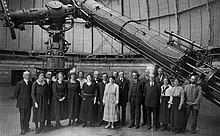
The Yerkes Observatory boasts the largest achromatic refractor ever utilized in astronomy, measuring 102 centimeters (40 inches) in diameter (photo captured during Einstein’s visit on May 6, 1921).
Chromatic and spherical aberration pose challenges for refractors. These issues are more pronounced in shorter focal ratios compared to longer ones. A 100 mm (4 inch) f/6 achromatic refractor is likely to exhibit noticeable color fringing, often resulting in a purple halo around bright objects. In contrast, a 100 mm (4 inch) f/16 refractor experiences minimal color fringing.
When dealing with very large apertures, another issue that arises is lens sagging caused by the gravitational deformation of the glass. Because the lens can only be supported at the edges, the center of the lens sags under the influence of gravity, resulting in distorted images. The maximum practical size for a lens in a refracting telescope is approximately 1 meter (39 inches).
Another challenge arises from defects in the glass, such as grooves or small air bubbles that may be trapped within. Additionally, certain wavelengths are obstructed by the opacity of glass, and even visible light is affected by reflection and absorption as it passes through air-glass interfaces and the glass itself. Reflecting telescopes, which can have much larger apertures, are being used more frequently in astronomical research as they eliminate or reduce many of these issues associated with refractors.
Applications and Achievements
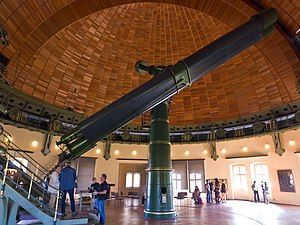 In 1904, the Große Refraktor twin telescope, equipped with lenses measuring 80 cm (31.5″) and 50 cm (19.5″), made a groundbreaking discovery by identifying calcium as an interstellar medium.
In 1904, the Große Refraktor twin telescope, equipped with lenses measuring 80 cm (31.5″) and 50 cm (19.5″), made a groundbreaking discovery by identifying calcium as an interstellar medium. 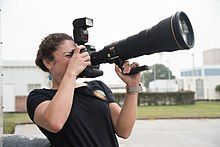 Astronauts are trained to use cameras with large lenses.
Astronauts are trained to use cameras with large lenses.
Refractor telescopes have been widely used in astronomy for observing both celestial objects and the Earth. Many important findings about our solar system were made using single lens refractors.
The use of refractive telescope optics is prevalent in photography and space exploration as well.
Galileo made a significant contribution to astronomy by utilizing the refractor telescope. In 1609, he employed this technology to identify the four most prominent moons orbiting Jupiter. Furthermore, a few decades later, early refractors aided in the discovery of Titan, the largest satellite of Saturn, along with three other Saturnian moons.
During the 19th century, refracting telescopes played a crucial role in advancing astrophotography and spectroscopy. Additionally, a related instrument called the heliometer was utilized for the first time to determine the distance to a distant star. However, the limitations of modest apertures meant that many astronomical objects remained beyond the reach of observation. It wasn’t until the introduction of long exposure photography that reflecting telescopes began to surpass refractors in terms of reputation and capabilities. Nevertheless, refractors still made significant discoveries, such as the moons of Mars, the fifth moon of Jupiter, and numerous double stars, including the famous Sirius. They were also commonly used for positional astronomy, as well as in photography and Earth observation.
Single-element lenses and airborne telescopes were used to discover Galileo Galilei and many other satellites of the solar system.
In 1610, Galileo Galilei used a refracting telescope to discover the satellites of Jupiter, known as the Galilean satellites.
Titan, a satellite of the planet Saturn, was discovered on March 25, 1655 by Christiaan Huygens, a Dutch astronomer.
In 1861, using an 18 and a half inch Dearborn refractor telescope, a smaller stellar companion of the brightest star in the night sky, Sirius, was discovered.
By the 18th century, refractors faced stiff competition from reflectors, which had the advantage of being able to be much larger and typically did not suffer from the same issue of chromatic aberration. However, the astronomical community continued to use smaller, doublet refractors compared to the advanced instruments of today. Notable discoveries made with these refractors include the identification of Mars’ satellites and Jupiter’s fifth moon, Amalthea.
On August 12, 1877, Asaph Hall discovered Deimos at approximately 07:48 UTC and Phobos on August 18, 1877, at the U.S. Naval Observatory in Washington, D.C., around 09:14 GMT (according to contemporary sources, using the pre-1925 astronomical convention starting at noon, the discovery times are given as August 11 14:40 and August 17 16:06 Washington Mean Time, respectively).
The moon Amalthea of Jupiter was first observed on September 9, 1892, by Edward Emerson Barnard while using a 36-inch (91 cm) refractor telescope at Lick Observatory. Its discovery was made through direct visual observation with a double-lens refractor.
In 1904, the Potsdam Great Refractor (a double telescope with two doublets) made a significant finding – the presence of the interstellar medium. Astronomer Prof. Hartmann deduced from observations of the double star Mintaka in the constellation Orion that the interstellar medium contained calcium.
The planet Pluto was discovered by examining photographs (referred to as “plates” in astronomy) in a blinking comparator using a refracting telescope. The telescope used for this purpose was an astrograph equipped with a 3-element, 13-inch lens.
List of the biggest refracting telescopes
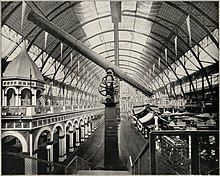 The Yerkes Great refractor was installed at the 1893 World’s Fair in Chicago, making it the tallest, longest, and largest aperture refractor at that time.
The Yerkes Great refractor was installed at the 1893 World’s Fair in Chicago, making it the tallest, longest, and largest aperture refractor at that time. 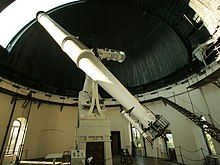 There is also the 68 cm (27 in) refractor located at the University of Vienna Observatory.
There is also the 68 cm (27 in) refractor located at the University of Vienna Observatory.
Here are a few examples of some of the largest achromatic refractor telescopes with a diameter over 60 cm (24 in).
- The Large telescope of the 1900 Paris Exposition had a size of 1.25 meters (49 inches), but it was dismantled after the exhibition.
- The Yerkes Observatory had a size of 101.6 cm (40 inches).
- The Swedish 1st solar telescope had a size of 98 cm (39 inches).
- The Lick Observatory had a size of 91 cm (36 inches).
- The Paris ObservatoryMethodon Great Refractor had a size of 83 cm (33 inches) with an additional 62 cm (24 inches).
- Potsdam Great Refractor (80 cm (31 inches), + 50 cm (20 inches))
- Nice Observatory (77 cm or 30 inches)
- John Wall (76.20 cm or 30 inches) dialite refractor telescope, the largest refractor built by man at Hanwell Community Observatory
- Grubb’s 28-inch refractor at the Royal Greenwich Observatory, (71 cm or 28 in.) aperture lens
- Great Refractor of the Vienna Observatory, (69 centimeters or 27 inches)
- Archenhold Observatory, the longest refractor telescope ever built (focal length 68 cm or 27 inches × 21 m or 69 feet)
- refractor at the U.S. Naval Observatory (66 centimeters or 26 inches)
- Newall refractor at the National Observatory of Athens (62.5 cm or 24.6 inches)
- Lowell Observatory (61 centimeters or 24 inches)
Related Resources
Extra Reading
Citations
Useful Links
| For more information on refracting telescopes, visit Wikimedia Commons. |
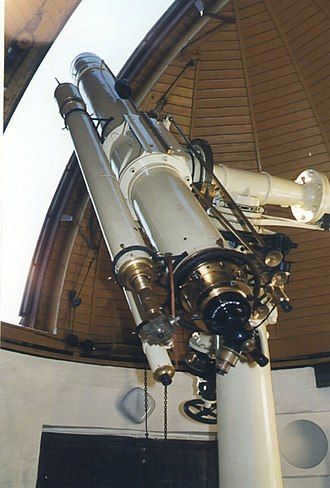
The lens telescope (also known as a refractor) is a type of optical telescope that utilizes a lens as its objective to create an image (also referred to as a dioptric telescope). The initial design of the refracting telescope was employed in spyglasses and astronomical telescopes, but it was also utilized in long-focus camera lenses. Although large refracting telescopes were highly popular in the latter half of the 19th century, they were eventually replaced by reflecting telescopes with larger apertures for most research purposes. The magnification of a refractor is determined by dividing the focal length of the objective lens by the focal length of the eyepiece.
Refractive telescopes typically feature a lens positioned at the front, followed by a lengthy tube, and ultimately an eyepiece or instruments at the rear where the image from the telescope is focused. Initially, telescopes utilized a single-element lens, but as time progressed, two- and even three-element lenses were developed.
A refractive telescope is a technology commonly employed in various other optical devices, including binoculars and lenses with zoom or telephoto capabilities.
Discovery
The invention of refractors marked the beginning of optical telescopes. The initial reference to a refracting telescope emerged in the Netherlands circa 1608, when an eyeglass manufacturer named Hans Lippershey from Middelburg made an unsuccessful attempt to secure a patent for it. Word of the patent’s existence spread rapidly, and in May 1609, Galileo Galilei, located in Venice at the time, learned about the discovery, created his own rendition, and utilized it to make notable astronomical observations.
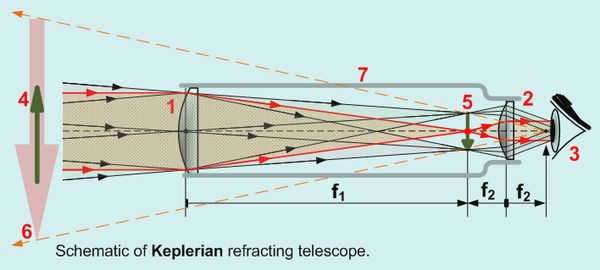
All refracting telescopes operate on the same principles. They use a combination of an objective lens 1 and some type of eyepiece 2 to gather more light than the naked eye can, and then focus it to present the viewer with a brighter, clearer, and magnified image 6.
The lens of a refracting telescope refracts or bends light. This bending causes parallel rays of light to come together at the focal point, while non-parallel rays converge at the focal plane. The telescope effectively transforms a beam of parallel rays, forming an angle α with the optical axis, into a second parallel beam with an angle β. The ratio of β to α is known as the angular magnification. It represents the difference in size of the image on the retina of the eye when using the telescope compared to when not using it.
There are numerous configurations available for refractive telescopes to correct image orientation and various types of aberrations. These telescopes, known as refracting telescopes or refractors, produce images through the bending or refraction of light.
Telescope by Galileo
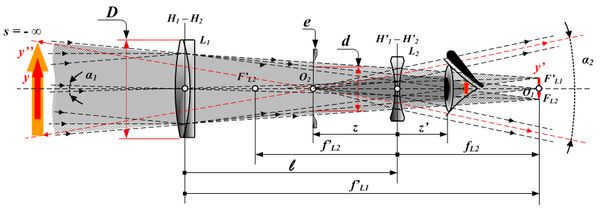
Optical diagram of the Galileo telescope y – A distant object; y ′ – The actual image produced by the lens; y ″ – Magnified virtual image produced by the eyepiece; D – diameter of the entrance pupil; d – diameter of the virtual exit pupil; L1 – objective lens; L2 – eyepiece lens e – The virtual exit pupil of the telescope
The optical design used by Galileo Galilei in 1609 is commonly known as the Galileo Galilei telescope. It consisted of a convex objective lens and a concave eyepiece lens (Galileo, 1610). Unlike other designs, the Galileo telescope does not have an intermediate focus, resulting in a non-inverted and direct image that can be further magnified with additional devices.
The telescope created by Galileo was extremely powerful and measured 980 millimeters (3 feet 3 inches) in length. It had the ability to magnify objects by about 30 times. Unfortunately, due to some design flaws, such as the shape of the lens and the limited field of view, the images produced were often blurry and distorted. Nevertheless, Galileo was still able to utilize this telescope to study the heavens. He observed craters on the Moon, the four largest moons of Jupiter, and the changing phases of Venus.
When light beams from a distant object ( y ) reach the objective lens, they are focused at the focal plane ( F 'L1 / y' ). The eyepiece lens ( L2 ) then intercepts these rays and makes them parallel once again. The non-parallel light rays from the object, which initially come at an angle of α1 to the optical axis, pass through the eyepiece at a larger angle ( α2> α1 ). This causes the apparent angular size to increase, resulting in the perceived magnification.
The final image ( y ″ ) is a virtual image that is located at infinity and positioned in the same upward direction as the object.
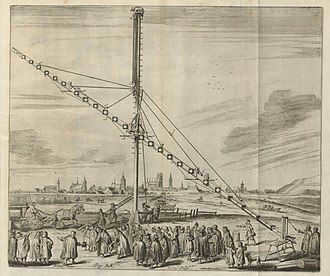
An engraved depiction of a refracting astronomical telescope designed by Johannes Hevelius, featuring a focal length of 46 meters (150 feet).
The Kepler telescope, which was invented by Johannes Kepler in 1611, is an improvement on Galileo’s original design. Instead of using a concave lens as the eyepiece, Kepler’s telescope utilizes a convex lens. This modification has the advantage of causing the rays of light emitted from the eyepiece to converge. As a result, the viewer experiences a much wider field of view and greater distance from the exit pupil. However, the image seen through the telescope is inverted. This design allows for much higher magnification, but in order to compensate for aberrations, the simple lens must have a very high f-ratio. For example, Johannes Hevelius constructed a lens with a focal length of 46 meters (150 feet) and even a longer camera-less antenna for his telescopes. Additionally, the design permits the use of a micrometer in the focal plane, which can be used to determine the angular size and/or distance between observed objects.
Huygens constructed a flying telescope for the Royal Society of London, equipped with a single-element lens measuring 19 cm (7.5 in).
Refractors with achromatic lenses
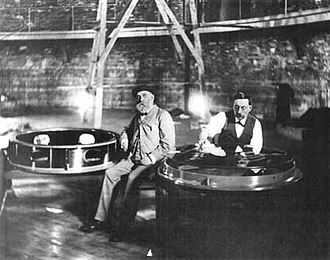
The next significant advancement in the development of refracting telescopes came with the creation of the achromatic lens, a lens consisting of multiple elements that addressed issues with chromatic aberration and allowed for shorter focal lengths. This groundbreaking invention was first made in 1733 by Chester Moore Hall, an English lawyer, although it was later independently invented and patented by John Dollond around 1758. This innovative design revolutionized refracting telescopes by utilizing a lens composed of two pieces of glass with different dispersion properties, known as “corona” and “colorless glass,” to minimize both chromatic and spherical aberration. Each side of the two lens components is meticulously ground and polished before being meticulously joined together. The achromatic lenses are meticulously calibrated to bring the two wavelengths, typically red and blue, into focus on the same plane.
Dollond achromats gained popularity during the 18th century for their ability to be made shorter. However, the size of the glass lenses was limited to four inches due to difficulties in glass manufacturing.
In the later part of the 19th century, Guinand, a glass manufacturer, developed a method to produce larger and higher quality glass blanks. He shared this technique with his student Fraunhofer, who further improved upon the technology and also created the design for Fraunhofer’s duplex lenses. The advancements in glass technology resulted in the creation of impressive refractors in the 19th century, which gradually increased in size throughout the decade. By the end of the century, these telescopes surpassed one meter in diameter before being replaced by silvered glass mirror telescopes in the field of astronomy.
Notable lens makers of the 19th century include:
There were several famous refractors in the 19th century, such as the James Leake telescope, which had a size of 91 cm (36 inches), and the 28-inch Greenwich refractor, which was 71 cm in size. Another example of an older refractor is the Schuckburg telescope, which dates back to the late 1700s. One particularly notable refractor was the Trophy Telescope, which was displayed at the Great Exhibition of 1851 in London. The 19th century was known for its “great refractor” era, during which large achromatic lenses were introduced. This culminated in the construction of the largest achromatic refractor ever made, the Great Paris Exhibition Telescope of 1900.
In 1838, the Royal Observatory in Greenwich installed the Sheepshanks telescope, which featured a Koshua lens. This telescope had a lens that was 6.7 inches (17 cm) wide and remained the largest telescope at Greenwich for approximately twenty years.
The Observatory’s report for 1840 mentioned the newly acquired Sheepshanks telescope, which was equipped with a Koshua doublet.
The addition of this telescope to the Observatory’s collection is highly anticipated due to its exceptional power and quality.
During the 1900s, Zeiss emerged as a prominent manufacturer of optics, showcasing their expertise through remarkable achievements in the field of refractors. The 12-inch Zeiss refractor at the Griffith Observatory, which has been in operation since 1935, has provided over 7 million individuals with the opportunity to gaze into the wonders of the universe, marking a record-breaking number of people who have experienced telescope observations.
Achromats gained popularity in the field of astronomy due to their ability to produce accurate star catalogs, while also requiring less maintenance compared to metal mirrors. Notable astronomical discoveries, such as the planet Neptune and the satellites of Mars, were made using achromats.
Prestigious observatories often employed long achromats, despite their smaller aperture in comparison to larger reflectors. Throughout the late 18th century, these observatories regularly acquired larger and longer refractors, further expanding their capabilities.
For instance, the Nice Observatory introduced a refractor with a diameter of 77 centimeters (30.31 inches), which was the biggest at the time, but it was soon outdone in just a few years.
Apochromatic refractors
An apochromatic lens typically comprises of three elements that converge light of three distinct frequencies into a shared focal point.
Apochromatic refractors have lenses constructed from unique materials that possess extremely low dispersion. Their purpose is to converge three wavelengths (typically red, green, and blue) onto the same focal plane. The resulting residual color error (also known as tertiary spectrum) is significantly smaller than that which occurs with achromatic lenses. These telescopes incorporate either fluorite elements or specially designed ultra-low dispersion (ED) glass within their objective lenses, resulting in exceptionally sharp imagery devoid of chromatic aberration. Due to the specialized materials required for their production, apochromatic refractors typically command a higher price compared to other telescopes of equivalent aperture.
In the 18th century, Dollond, a renowned manufacturer of duplet telescopes, also produced triplets, although they did not attain the same level of popularity as two-element telescopes.
One of the well-known triple goals is the Cooke triplet, renowned for its proficiency in rectifying Seidal aberrations. It is acknowledged as one of the most crucial designs of objectives in photography. The Cooke triplet can rectify spherical aberration, coma, astigmatism, field curvature, and distortion using just three elements for one wavelength.
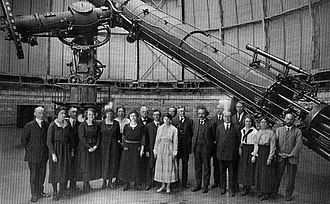
The Yerkes Observatory’s 40-inch refractor, which measures 102 centimeters, holds the distinction of being the largest achromatic refractor ever used in the field of astronomy (as seen in the photo taken on May 6, 1921, during Einstein’s visit).
When it comes to refractors, there are some challenges caused by residual chromatic and spherical aberrations. These aberrations tend to have a greater impact on shorter focal ratios compared to longer ones. For instance, a 100 mm (4 inches) achromatic refractor with an aperture of f/6 is likely to exhibit noticeable color fringing, often seen as a purple halo around bright objects. On the other hand, a 100 mm (4 inches) refractor with a longer focal ratio of f/16 will have a smaller colored border.
Having a very large aperture also poses the challenge of lens sagging caused by the gravitational deformation of the glass. Since the lens is only supported by the edge, the center of the lens sags due to the force of gravity, resulting in distorted images. The largest practical size for a lens in a refracting telescope is approximately 1 meter (39 inches).
Another issue is the presence of glass defects, such as grooves or small air bubbles trapped within the glass. Additionally, certain wavelengths are obscured by the opacity of glass, and even visible light is affected by reflection and absorption as it passes through the air-glass interface and the glass itself. Reflecting telescopes, which can be constructed with much larger apertures, largely replace refractors in astronomical research as they eliminate or reduce most of these problems.
The ISS-CAM on Voyager 1/2 was equipped with a lens measuring 6 cm (2.36″) that was sent into space during the late 1970s, serving as a prime example of reflector utilization in outer space.
Utilizations and Accomplishments
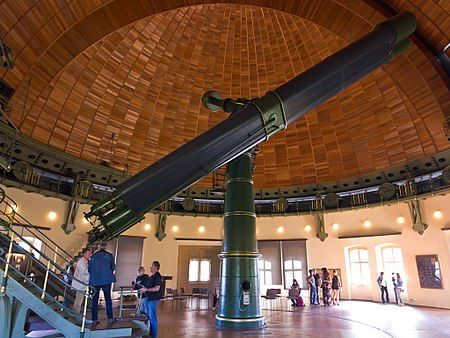
The “Great Refractor” is a dual telescope equipped with lenses measuring 80 cm (31.5″) and 50 cm (19.5″). It played a crucial role in the detection of calcium as a component of the interstellar medium in 1904.
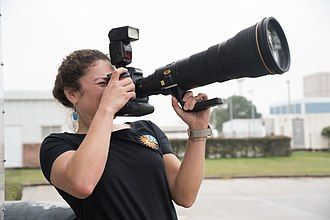
Refractive telescopes have been well-known for their application in astronomy and for observing the Earth. Singlet refractors played a significant role in early discoveries of the solar system.
The optics of refractive telescopes are widely used in photography and also in Earth orbit.
Galileo’s use of the refractive telescope in 1609 to discover the four largest moons of Jupiter is one of its most famous applications. Additionally, the first refractors were used a few decades later to discover Titan, the largest moon of Saturn, as well as three other satellites of Saturn.
During the 19th century, refracting telescopes played a crucial role in the fields of astrophotography and spectroscopy. Additionally, another instrument known as the heliometer was utilized to determine the distance to distant stars. Although these telescopes had small apertures which limited their ability to make significant discoveries, the development of long exposure photography allowed for the observation of previously inaccessible astronomical objects. As a result, reflecting telescopes began to gain more recognition and popularity than refracting telescopes. However, there were still notable discoveries made using refractors, such as the detection of the moons of Mars, the fifth moon of Jupiter, and numerous double stars including Sirius (also known as the Dog star). Refracting telescopes were commonly employed in positional astronomy and found applications in photography and Earth observation as well.
Single-element lenses and airborne telescopes were used by Galileo and other astronomers to discover satellites in the solar system.
In 1610, Galileo Galilei used a refracting telescope to discover the Galilean satellites of Jupiter.
Dutch astronomer Christiaan Huygens discovered Titan, a satellite of Saturn, on March 25, 1655.
Doublets In 1861, using Dearborn’s 18-inch refractor telescope, it was found that Sirius, the brightest star in the night sky, had a smaller stellar companion.
Reflectors emerged as a strong competitor to refractors in the 18th century. These reflectors, often larger in size, did not suffer from the same issue of chromatic aberration. However, despite this advantage, the astronomical community continued to favor small aperture doublet refractors over modern instruments. Notable discoveries made using these refractors include the satellites of Mars and Jupiter’s fifth satellite, Amalthea.
On August 12, 1877, at approximately 07:48 UTC, Asaph Hall discovered Deimos at the U.S. Naval Observatory in Washington, D.C. He then went on to discover Phobos on August 18, 1877, at about 09:14 UTC. (According to contemporary sources, using the pre-1925 astronomical convention that began in the afternoon at noon, the discovery times are stated as August 11 14:40 and August 17 16:06 UTC, respectively).
Amalthea, a moon of Jupiter, was found on September 9, 1892, by Edward Emerson Barnard at Lick Observatory using a 36-inch (91 cm) refractor telescope. It was discovered by directly observing it with a refractor that had a double-lens.
In 1904, the Potsdam Great Refractor (a double-lens double telescope) made a discovery about the interstellar medium. Professor Hartmann, an astronomer, determined that the interstellar medium contained calcium based on observations of the double star Mintaka in Orion.
Pluto, the planet, was discovered by examining photographs (known as “plates” in astronomy) in a blinking comparator. These photographs were taken with a refracting telescope, specifically an astrograph with a 3-element 13-inch lens.
A compilation of the biggest refracting telescopes
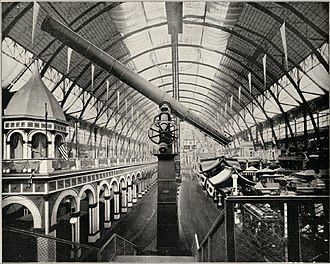
The Yerkes Great refractor was placed at the 1893 World’s Fair in Chicago. It was the tallest, longest, and had the largest aperture of any refractor at that time.
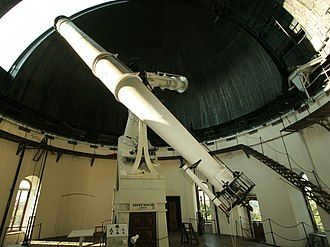
Here are some examples of achromatic refracting telescopes with a diameter over 60 cm (24 in).
- The Large Telescope at the 1900 Paris Exposition had a diameter of 1.25 meters or 49 inches. It was dismantled after the Exposition.
- The Yerkes Observatory has a diameter of 101.6 centimeters or 40 inches.
- The Swedish 1-meter solar telescope has a diameter of 98 cm or 39 inches.
- The Lick Observatory has a diameter of 91 cm or 36 inches.
- The Paris ObservatoryMethodon Great Refractor has a diameter of 83 cm (33 inches), with an additional 62 cm (24 inches).
- The Potsdam Great Refractor has a diameter of 80 cm (31 inches), with an additional 50 cm (20 inches).
- The Nice Observatory has a diameter of 77 centimeters or 30 inches.
- John Wall’s dialite refractor telescope, located at the Hanwell Community Observatory, is the largest refractor built by man with a diameter of 76.20 cm or 30 inches.
- The Vienna Observatory has a large refractor measuring 69 cm (27 inches).
- The Archenhold Observatory boasts the longest refractor telescope ever built, with a focal length of 68 cm (27 inches) and a length of 21 m (69 feet).
- The U.S. Naval Observatory has a refractor measuring 66 centimeters (26 inches).
- The National Observatory of Athens houses the Newall refractor, which measures 62.5 centimeters (24.6 inches).
- At the Lowell Observatory, there is a refractor measuring 61 centimeters (24 inches).

